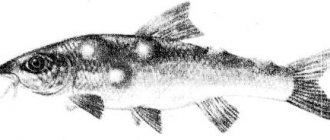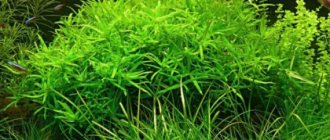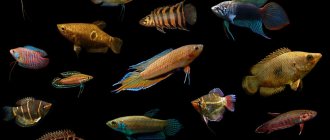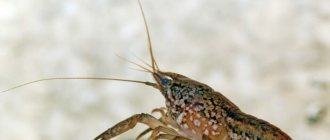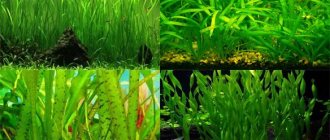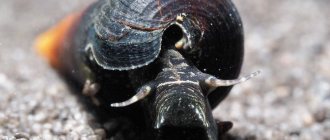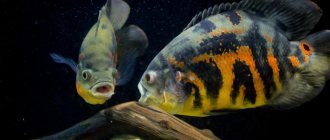Tarantula spiders, Acanthoscurria
Acanthoscurria geniculata, or as it is also called the “Brazilian white-knuckled tarantula spider,” is the type representative of the genus Acanthoscurria , the most popular and widespread tarantula spider of its genus. Acanthoscurria geniculata is found in keeper collections around the world, this is facilitated by low prices and simple conditions for keeping this tarantula spider.
Acanthoscurria geniculata is native to the rainforests of Northern Brazil. In nature, this tarantula digs quite deep burrows, or settles in the roots of trees, under stones or other shelters. Acanthoscurria geniculata spends the entire daylight hours in its nest, and only after dark comes out in search of prey.
Acanthoscurria geniculata is a very impressive tarantula spider that attracts attention with its large size, contrasting color and excellent appetite. In my collection there is an adult female of this species, which I raised from a small molt, now she has an impressive size, about 9 centimeters in the body, for the entire time she was kept, I have never regretted that I bought this tarantula.
Acanthoscurria geniculata characteristics:
Size of an adult: As I wrote above, this species has an impressive size; an adult can reach up to 9-10 centimeters in the body and up to 20 centimeters in the paw span.
Growth rate: Females of the species Acanthoscurria geniculata reach sexual maturity by 2-2.5 years, males, as is common among tarantulas, do this faster, in 1.5-2 years.
Lifespan: Females of this species can live up to 15 years.
Species: Acanthoscurria geniculata is a terrestrial tarantula spider that can burrow if provided with sufficient substrate and does not provide shelter.
Irritating hairs: This species has hairs, and Acanthoscurria geniculata is not shy about combing them; it does this at the first opportunity.
Poison: It does not pose a danger to humans, but according to research, Acanthoscurria geniculata has a lot of poison; in one poison sampling procedure, scientists received about 9 milligrams of dry poison, which is quite a lot.
Aggressiveness and danger: Spiders of this species can be quite aggressive and nervous, but they do not have a high speed of movement and are not considered dangerous.
Features: The temperament of spiders of the species Acanthoscurria geniculata is quite different; sometimes you come across calm individuals that can easily walk from hand to hand and do not show aggression when their territory is interfered with. And sometimes there are crazy people who bite the stream of water or tweezers that are used to remove debris from the terrarium.
Lifestyle
The white-knee spider lives not only in burrows, but also under stones and in rotting logs near lakes and other bodies of water. Burrows are made between tree roots or in shady places under rocks. It goes hunting at dusk. Spiders usually bite anything that moves. The intervals between molts can last from 3 weeks to a year.
Acanthoscurria geniculata maintenance at home:
To keep this tarantula spider, a horizontal terrarium measuring approximately 40x30x30 centimeters is best suited. Acanthoscurria geniculata, like almost all other tarantula spiders, contains one individual at a time. Since this species loves high humidity, the terrarium, of course, must have good ventilation; it is good if there are ventilation holes both at the bottom and at the top of the terrarium.
coconut substrate is ideal as a substrate ; it is safe for the tarantula, absorbs moisture well, and does not lend itself to mold; the layer of substrate should be at least 4-5 centimeters. It is also necessary to install a shelter in the terrarium with Acanthoscurria geniculata; this can be any decoration with the help of which the tarantula can feel “hidden from view.” For an adult, you also need to install a drinking bowl with constantly clean and fresh water.
Acanthoscurria geniculata is accustomed to conditions of high humidity; the humidity level in the terrarium should be maintained at about 70-80%, this can be achieved by installing a drinker and spraying the substrate once every few days with a spray bottle. The main thing is to leave the substrate moist, not wet, and not to let it become a swamp. The temperature in the terrarium with Acanthoscurria geniculata should be maintained in the range from 23 to 27 degrees Celsius; as the temperature drops, the tarantula will become inactive, will eat poorly and grow more slowly, and if the temperature drops too much, it may die.
Pet breeding in captivity
Unlike most arachnids, Acanthoscuria geniculata reproduces very well at home . Individuals become sexually mature by two years of age, although males mature somewhat earlier. To save the life of the male, the female should be fed before mating or the partner should be removed immediately after fertilization. After 3 months, the spider weaves a cocoon from the web, in which from 300 to 600 spiders will develop. The number of eggs laid depends on the size of the female. After two months, the young leave the cocoon.
After mating, the female can kill the male, so the latter are immediately removed
It is especially important during the breeding season to maintain a constant temperature and humidity in the terrarium. Minor deviations can negatively affect the development of children.
The unpretentiousness of Acanthoscura geniculata is the main indicator when choosing an animal as a pet. This type of arachnid is considered peaceful, however, the tarantula can become aggressive if the boundaries of its personal space are violated. Although its bite is safe for humans, precautions must still be taken, especially if there are children in the house.
Acanthoscurria geniculata feeding:
There are usually no problems with this; the spider greedily grabs almost any food objects , and very rarely refuses food; this is usually associated with the approach of molting. Acanthoscurria geniculata should be fed 1-2 times a week for adults, and 2-3 times a week for children and adolescents.
The size of the food insect should be selected to match the body size of the tarantula spider, without taking into account the length of its legs. Although in the case of Acanthoscurria geniculata, food objects slightly larger than the spider’s body can be given.
Tarantula spiders need to be fed with food insects, for example: marbled, Argentine, Turkmen, six-spotted, Madagascar cockroaches, zophobas , crickets or other food insects.
Soil for the white-knuckled spider
Since Acanthoscuria prefers to dig holes, you need to take care of the presence of substrate in the aquarium . The most suitable are peat, sphagnum moss or coconut fiber. You should choose high-quality materials that will not contain any chemicals, since this type of spider is very sensitive to various impurities.
The substrate for spiders must be environmentally friendly
The thickness of the substrate in the terrarium should be at least 5 cm. Many experienced terrarium keepers recommend spreading a layer of bedding for the spider in a layer of at least 10 cm. This will help create natural conditions for it.
The soil will also need to be moistened twice a day or as it dries. To do this, you can use a regular spray bottle.
Shelter options
An integral part for any tarantula is the presence of a house in the terrarium. To do this, it is recommended to use various items that can be found at home or purchased at a pet store:
- coconut shell;
- special artificial house;
- pot;
- a box;
- snag with a hollow.
It is advisable to organize a shelter for a tarantula spider.
If the owner does not take care of the presence of a shelter in the aquarium, then the spider will make it himself from any objects available to him. They can serve as measuring instruments (thermometer, hygrometer) or a drinking bowl.
All objects in the terrarium should be secured, since the white-knee spider can easily move them. Also, in its habitat there should not be any sharp objects that could injure its body.
Cleaning and cleaning the terrarium
One of the most common problems that an exotic spider enthusiast may encounter is the appearance of mold on the substrate. This is not surprising, since the presence of nutrients in the soil, as well as high temperature and humidity, create an optimal environment for mold fungi. This problem should be identified and corrected as soon as possible. To do this, it will be enough to stop moistening the substrate for a while and let it dry. If the fungus reappears, the soil will need to be replaced, as well as a complete cleaning of the aquarium to get rid of mold spores.
Regular cleaning of the terrarium will be required after each shedding of the eight-legged pet. It would be a good idea to remove its hairs from the substrate from time to time.
Feeding the tarantula
The main diet of Acanthoscuria is insects . But they are not averse to eating small animals, such as mice and frogs. One of their favorite delicacies is the marbled cockroach, which can be purchased as food at a pet store. It is important that the insects are alive, then the tarantula will hunt them, which is a very exciting process.
Before each molt, geniculates become somewhat indifferent to food, so you should not worry about this.
With age, the frequency of meals in tarantulas decreases
In terms of feeding frequency, adults only need to feed once a week, while juveniles will need to be fed 3 times a day. In order for young animals to grow as quickly as possible, they can be given mealworms as food.
Careful care
Geniculates really don’t like it when anyone violates the boundaries of their territory. If this happens, then the tarantula gives a sign of danger, namely, it takes a fighting stance on its hind legs. At the same time, he begins to actively swing his front legs, scratching hairs from them. In humans, such hairs can cause irritation on the skin. If the intruder does not retreat, then Acanthoscurria geniculata may bite, so care should be taken to protect your hands while cleaning. To do this, you will need gloves made of thick material, as well as long tweezers.
Geniculate bites are safe for humans, but are very noticeable
For humans, the venom of this arachnid is safe, but the bite will still be painful. It is believed that the poisonous substance that the tarantula releases at a time can kill 60 mice.
Area
In the wild, the tarantula spider (Acanthoscuria geniculata) can be found in Brazil. Here he lives in the deep jungle, preferring shady, damp places - near swamps, rivers, streams, lakes.
They hunt mainly at dusk. And they prefer to spend the daylight hours in some kind of shelter. A large crack in a tree, a hollow, or just a gap between stones will do. If a suitable shelter cannot be found, the spider may well dig a small hole in which it will hide in the morning.
Appearance description
Needless to say, the appearance of Acanthocuria geniculata is very memorable. Still, this spider can boast of quite large sizes. The body can reach 8-10 centimeters in diameter. And in some cases the paw span reaches 20 centimeters or even more!
The entire body is quite densely covered with hairs. The color range is rich - it is thanks to it that the variety is so popular. The body itself is black or dark brown, reminiscent of dark chocolate. But the coat color is more interesting. For the most part it is red - from light rich to dark, almost brown. Pure white stripes are clearly visible on the legs, giving the spider attractiveness and sophistication.
Males usually live only until mating, after which they die. And they become sexually mature at the age of one and a half to two years. Females begin mating a little later - at about two and a half years. And after laying eggs they are not going to die at all. With good care, they are quite capable of living up to fifteen years.
Defense Mechanisms
Despite the fact that Acanthoscuria geniculata is considered a non-dangerous spider, some care must be taken when keeping it. If only because all spiders are poisonous to one degree or another.
A healthy person survives the bite relatively easily. Although acute pain from a bite, fever and even convulsions may well accompany the entry of poison into the body. But for children, pets (cats, guinea pigs, small dogs) and people who are allergic to animal toxins, a bite can very well be fatal. This should be remembered.
An additional danger is posed by the hairs covering the spider's body. In captivity they often pull them out due to stress. And in the wild, hairs are often used, weaving them into webs to increase security. Contact with skin may cause burns. It's even worse if the hairs get into the lungs or eyes. Most often, symptoms (fever, itching, shortness of breath, weakness) disappear within a few hours. But if it gets into the eyes, permanent vision impairment may occur.
Owner reviews
Owners consider their “geniculates” to be wonderful pets, easy to keep . You can safely leave them and leave for up to 1.5 months: the spider can do without food. There is no unpleasant odor from their terrarium.
Spiders are very interesting to watch, because they behave actively, dig entire labyrinths, and move objects. As the owners say, tarantula spiders are excellent stress relievers. It is also believed that owning such a spider attracts wealth and good fortune.
Character.
This species is distinguished by its rather restless and even aggressive character. Reacts sharply to the intrusion of strangers into its habitat. And, although such spiders are not poisonous to humans, their bite is quite painful. Many compare it to a wasp sting. Therefore, experienced spider keepers advise cleaning the terrarium either with gloves or with long tweezers.
Acanthoscurria geniculata is a very active species. He loves to dig holes and holes, and also uses all imaginable and inconceivable objects as building materials for housing, from coconut peel to drinking bowls and thermometers from the terrarium.



